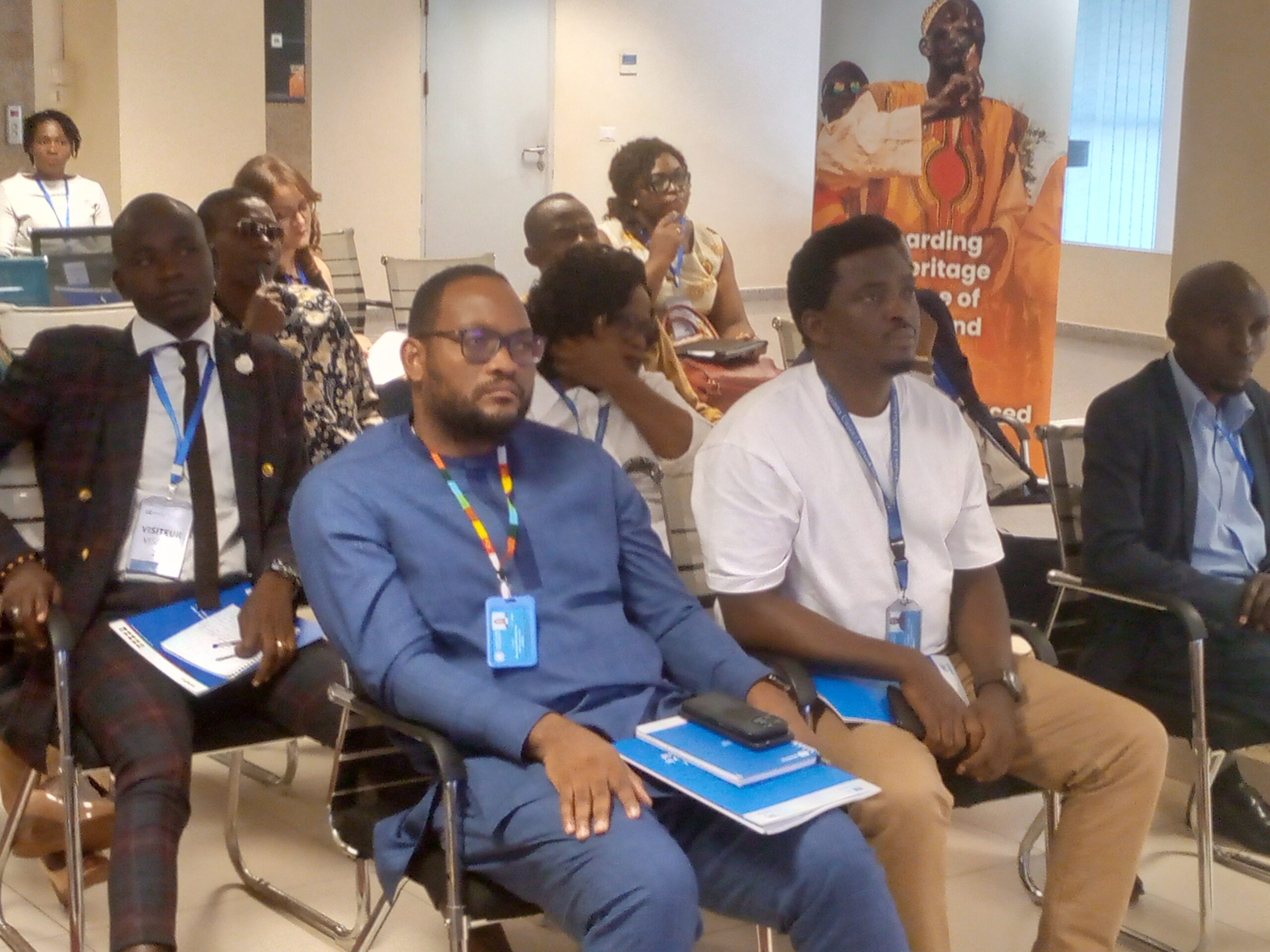Cross section of UNESCO & MINAC officials at the event
By Nformi Sonde Kinsai
A handbook emanating from a project dubbed: “Safeguarding living heritage as a source of resilience and recovery in situations of conflict and forced displacement,” has been restituted.
The project marked by training workshops with communities affected by forced displacement in the Minawao Refugee Camp in Cameroon was conducted by the UNESCO Multisectoral Regional Office of Central Africa in collaboration with Cameroon’s Ministry of Arts and Culture, MINAC and the Cameroon Office of the United Nations High Commission for Refugees.
The restitution of the outcome of the project that was supported under the Intangible Cultural Heritage Fund thanks to a generous contribution from the Government of Azerbaijan took place on November 21 during an online event organised by the Yaounde-based UNESCO Regional Office of Central Africa.
Speaking from the UNESCO Headquarters in Paris-France, the Chief of Unit, Capacity Building and Heritage Policy, Living Heritage Entity, Culture Sector; Susanne Schnuttgen, dwelled on the context of the project. She said assessments conducted by UNESCO in the Middle East and Africa have shown how conflict and forced displacement directly threaten the transmission and viability of intangible cultural heritage, which is a key foundation for the identity and wellbeing of communities, groups and individuals.
According to her, refugees and internally displaced persons, IDPs may turn to various forms of cultural expression to address their situations. “Rituals of grieving and mourning, collective practices of social bonding and remembrance, and the celebration of birth, marriage and other festive events may enhance psychosocial resilience, providing a sense of dignity, comfort and self-esteem. Within new environments, the performing arts or craft skills can provide a source of livelihood, while traditional knowledge systems may be harnessed for survival,” a concept note on the project maintains.
Within the framework of the UNESCO 2003 Convention’s global capacity building programme, the pilot project is geared at strengthening the capacities of communities to safeguard and mobilise their intangible cultural heritage in situations of conflict and forced displacement. The findings presented in a handbook will serve national and international organisations and actors working in the humanitarian field in raising awareness and understanding of the dual role of intangible cultural heritage in conflict situations and forced displacement.
The facilitators of the project, Sidi Traore and Martin Andrade spoke on the objectives of the activities and the impact of forced displacement on living heritage respectively. The objective include: developing training materials to strengthen capacities so as to undertake community-based needs identification; testing materials developed and training approach with communities; conducting community-based needs identification to determine how intangible cultural heritage has been affected; integrate lessons learnt into the handbook; and organise online visible events.
Based on identified needs, cultural festivals were recommended to enable communities showcase their living cultural heritage potentials; and create signalisation of sacred sites of host communities that need protection, amongst others.
Talking to the press, the Head of the Culture Unit Sector in the UNESCO Regional Office for Central Africa, Dodé Houehounha said wars across the world push communities away from homelands and in the course of fleeing; the living cultural heritage of such communities is disappearing. He said that is why in line with the 2003 UNESCO Convention, the pilot project was initiated in two countries of the world including Cameroon, and the Minawao Refugee Camp was chosen in collaboration with the UNHCR.
Dodé observed that the disappearance of the living cultural heritage of refugees and IDPs is understandable because they are in survival mode. “But culture can also be a source of resilience for communities, help in economic development; stability of communities leading to social cohesion and peaceful co-existence.
“From the needs assessments, communities discovered that their intangible culture could be promoted for them to find peace and stability again in their whole lives and transmit it to their kids for future generations. This is because it is part of their life, identity and dignity,” Dodé noted.
Monique Memong who represented the Ministry of Arts and Culture, MINAC at the event said the project also helped in identifying the difficulties being faced by the refugees and IDPs in effectively practicing their living cultural heritage. No sharing of knowledge on different cultures, language barriers as well as issues of smoothly interacting with the host communities were problems also identified. She said promoting intangible living cultural heritage has a strong transformative power of social cohesion and intercultural dialogue between the communities.

